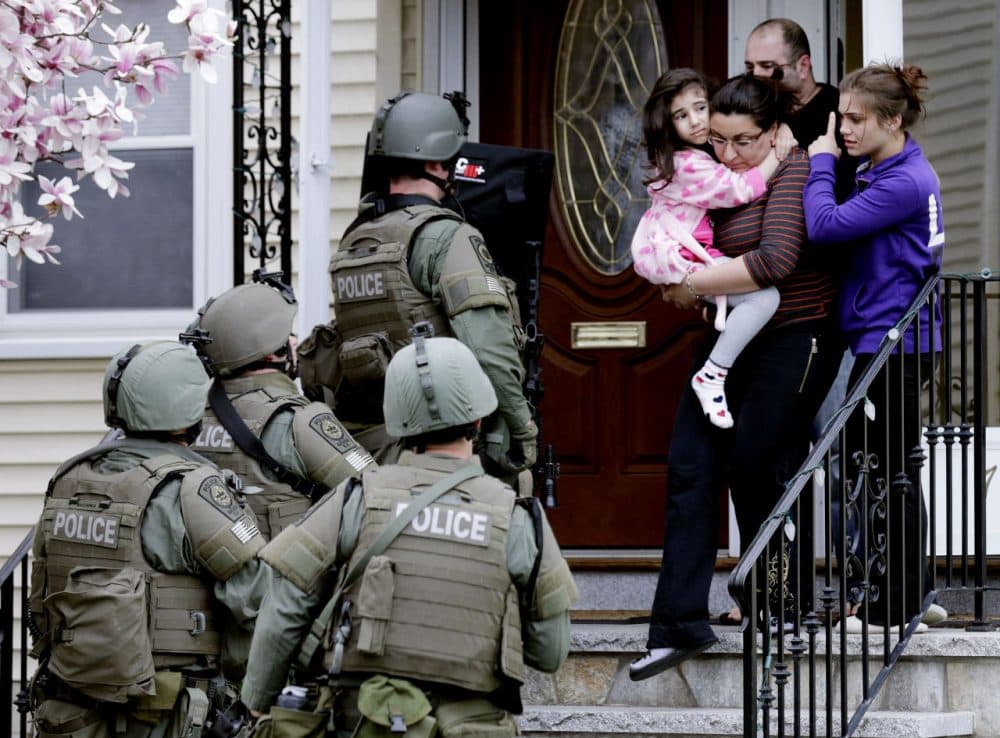Advertisement
Report's Troubling Conclusions About Marathon Bombing Manhunt
Resume
The state's "After Action Report" was made public last Friday. The detailed analysis outlines many successes in the bombing response, including life-saving coordination between medical personnel and law enforcement officers.
But the report also raises challenging questions about police actions during the hunt for the Tsarnaev brothers. The report highlights a lack of "weapons discipline", and "dangerous crossfire situations".
It also chronicles how as the search wore on, more than 2,500 officers from 116 federal, state and local agencies arrived in Watertown. Many of whom had self-deployed, and were either not folded in under any chain of command, or did not recognize supervisors outside of their own agencies.
The manhunt was an extraordinary situation. But what lessons does it hold for future terrorism incidents? What red flags does it raise?
Guests
Kade Crockford, director of technology for the Liberty Project with ACLU of Massachusetts. She tweets at @onekade.
Maki Haberfeld, chair of police science, in the Department of Law, Police Science and Criminal Justice Administration at John Jay College of Criminal Justice.
This segment aired on April 6, 2015.